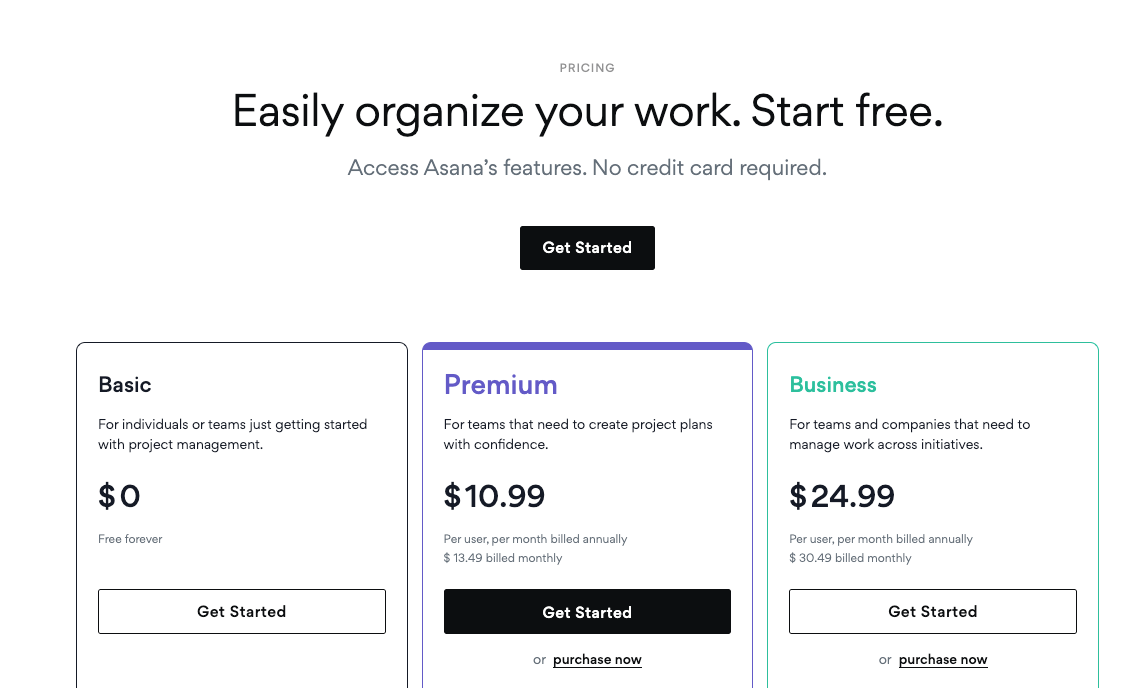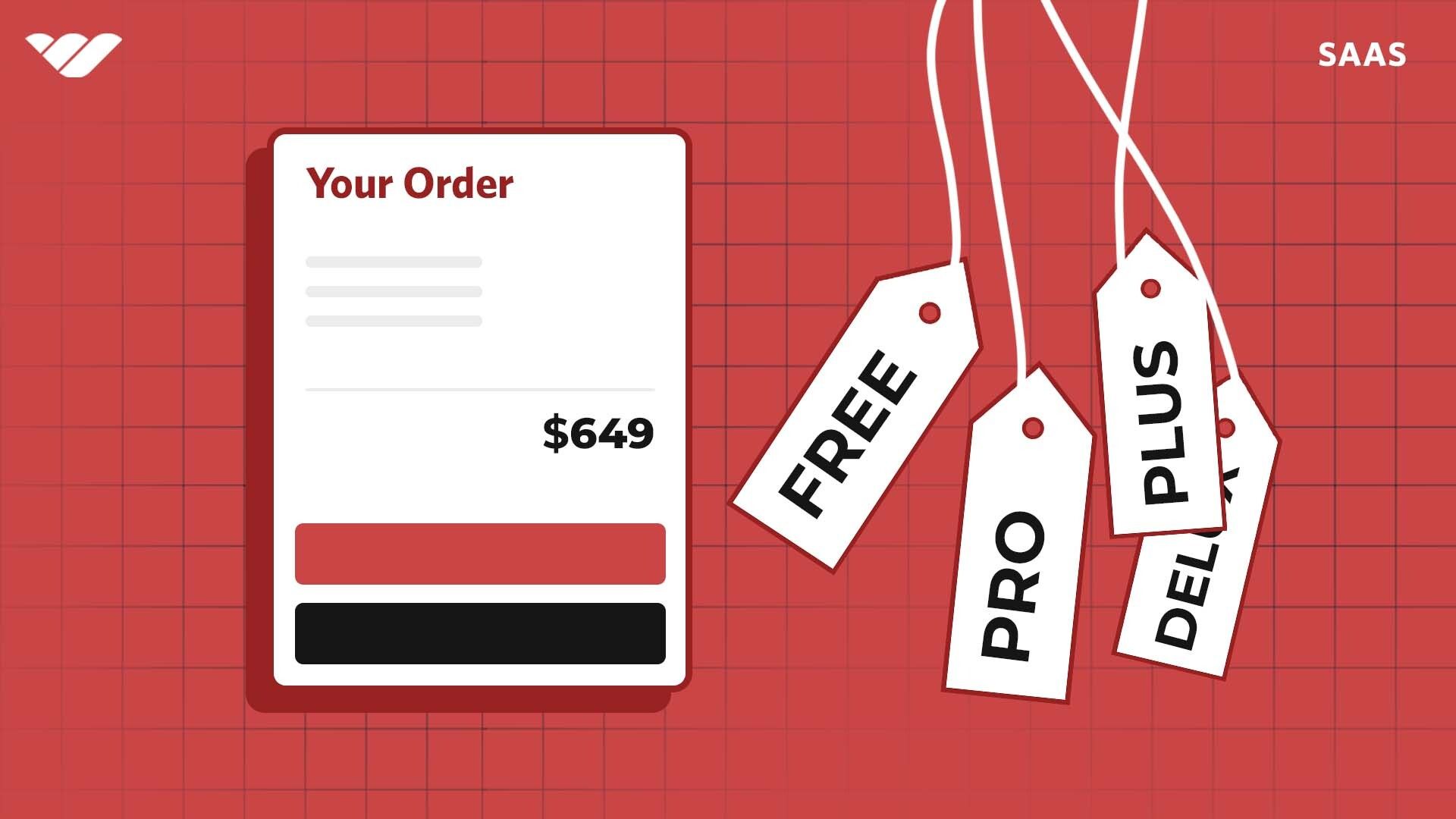The success of nearly any kind of business depends on its ability to generate revenue. Businesses have traditionally relied on sales-led growth models to drive revenue and increase profits. However, as technology advances, businesses are increasingly turning to product-led growth models to achieve their goals.
Product-led growth is an emerging business model that focuses on improving the customer experience by leveraging product features and capabilities as a primary driver of revenue. As such, product-led growth models typically prioritize user engagement over traditional sales tactics such as cold-calling or emailing prospects. By focusing on creating a great customer experience, businesses can create sustainable, long-term relationships with customers that result in increased loyalty and higher lifetime value.
In contrast, the traditional sales-led approach relies heavily on manual outreach efforts such as cold-calling or emailing potential customers in order to generate leads and close deals. While this approach can be effective for identifying high-value clients, it can also be a much slower and more expensive process than product-led growth.
In this article, we'll compare and contrast product-led growth and sales-led growth in detail. We will explore the differences between sales-led and product-led growth models and discuss how each model can be used effectively in today's competitive business landscape. We'll also look at the advantages and disadvantages of each approach and provide actionable tips for businesses looking to adopt either strategy for their own organizations. Let's get started!
Product-Led Growth vs. Sales-Led Growth
In simple terms, sales-led growth models use traditional sales funnels to drive growth, whereas product-led growth models rely on the product experience itself to drive growth
A product-led growth model creates a self-service sales process for customers that puts them in the driver's seat of the buyer's journey from start to finish. This can give them a greater sense of control and allow them to experience the product's value first-hand almost straight away. Also, product-led growth growth strategies are also typically very cost-effective because they require very little up front capital investment in sales and marketing initiatives.
However, a product-led-growth model also exposes the business to a higher level of customer churn risk since there is less personalized interaction between customers and sales reps, and therefore less opportunity for damage control when a customer is unhappy.
On the other hand, sales-led models require businesses to invest more time, effort, and money per customer, but customers are usually less likely to churn when they have a dedicated sales rep to guide them. Additionally, sales-led models can be more effective in acquiring customers who are interested in complex products or services.
Sales-led models also require businesses to have a better understanding of their target market and customer needs. This requires more research and data analysis than other models, but it allows the business to create a tailored approach for each customer. Further, having a dedicated sales team can help build relationships with customers that last longer than those created through other marketing methods.
Both product-led growth and sales-led growth models revolve around leading the customer toward their “aha” moment. The main difference is that a product-led strategy does this by providing an intuitive customer that enables the customer to easily arrive at the product’s value on their own terms, while a sales-led strategy does it with tailored guidance from a human sales rep.
What Kinds of Businesses Should Use a product-led Growth Strategy?
Businesses that use product-led growth models usually have shorter sales cycles and products that aren't too complex. Product-led growth models are popular with small SaaS businesses that sell apps or other software products to consumers or small businesses.
As the product itself is the main driver of growth, these kinds of businesses typically use a freemium pricing structure or offer a free trial of the product so users can easily try it out before making a purchase. This is an attractive option for consumers who want to know exactly what kind of product they are committing to.

Product-led growth models also rely heavily on user feedback to help the business improve the product and create additional features that will continue to attract more customers. This feedback loop helps businesses quickly iterate and improve their products, allowing them to stay ahead of the competition. It's critical for SaaS businesses that use product-led growth models to continuously source feedback and update their products because the entire sales and marketing model hinges on positive customer engagement with the product.
If you want your product to drive growth for your company, it needs to be a product that holds obvious value for your target users.
What Kinds of Businesses Should Use a Sales-led Growth Strategy?
Businesses usually use sales-led growth models for more complex products with variable pricing structures and long sales cycles. Sales-led growth models are most popular with large B2B SaaS companies that sell enterprise software products.
Sales-led growth models focus on leveraging sales teams to drive revenue. This involves developing a sales strategy and process, hiring and training sales reps, setting up a customer relationship management (CRM) system, creating marketing campaigns to generate leads, and optimizing the sales process for maximum efficiency. The goal is to maximize the number of qualified leads that convert into paying customers.
Sales-led growth models are often used in combination with other growth strategies such as content marketing, social media marketing, search engine optimization (SEO), referral programs, and influencer marketing. By combining these strategies with an effective sales-led growth model, companies can increase their customer base and grow their business quickly.
Can a Company Successfully Implement Both a Product-led Growth and Sales-led Growth Strategy?
You don’t necessarily have to choose between one or the other. Product-led growth models don‘t make sales reps obsolete — they just use sales reps in a supporting role rather than as the driving force behind the growth strategy. A hybrid model is certainly a viable possibility if it fits the needs of your business.
The decision to use a hybrid model should be based on several factors. Most crucially:
- The complexity of your product: Is the product easy for users to learn how to navigate? Or is it a vast system that requires a tailored onboarding strategy for each use case?
- Your pricing structure: Do you have a complicated, multi-tiered pricing structure to fit the needs of different kinds of clients? Or do you have a simpler pricing structure that potential customers can easily choose between on their own?
- Your target demographic(s): A product-led model is usually better for products targeted at individual consumers or small businesses whereas a sales-led model is usually better for products targeted at enterprise customers.

However, this does not mean that a large SaaS organization that sells enterprise software solutions can’t succeed with a product-led growth strategy. Many times, the best approach is a hybrid model that combines the elements of each approach that are most valuable for your particular business.
A hybrid model can introduce several unique benefits, such as the ability to widen your business’s scope over time and cater to both smaller and larger clients. Smaller clients can continue to use the product-led process that prioritizes self-service while larger clients can benefit from dedicated sales representatives to assist them through purchasing and setting up the more complex, enterprise tiers of your service. For many companies, the right approach is to start with a product-led model while the business is small, then grow into a hybrid model that adds elements of a sales-led growth strategy.
Pros and Cons of a Product-Led Growth Strategy
Pros
It’s Easier to Attract Leads
One of the advantages of using a product-led growth model for your SaaS business is that it widens the top of your sales funnel, meaning it will be easier to attract new customers more quickly. Since product-led growth models are designed to make it easier for customers to find and use your product without needing to speak with a sales rep, there is a higher chance of customers trying out your product and potentially becoming paying customers in the future.
Product-led sales models typically begin with a free trial or operate as a freemium pricing structure. By providing potential customers with free access to the product up front, product-led growth models allow them to evaluate and experience the product before making a purchase. A product-led growth model also allows SaaS businesses to focus on creating a great user experience, which can help attract more leads.
Lower Customer Acquisition Costs
Another advantage of using a product-led growth model is that a smaller sales process results in lower customer acquisition costs. Product-led growth models focus on providing a great user experience that encourages customers to try and purchase the product. This eliminates the need for costly marketing campaigns and sales teams, typically leading to lower customer acquisition costs.
Product-led growth models often rely on word of mouth and organic referrals to attract new customers, which can further reduce customer acquisition costs. Additionally, because the product is already designed to be intuitive and easy to use, there is less need for expensive customer service or technical support teams.
Greater Control for the Customer
Product-led growth strategies are based around self-service, allowing the customer to control their own buyer journey to a large degree. This can be a significant advantage for customers who prefer the freedom and flexibility of a self-guided sales process.
Businesses that use product-led growth models generally focus on creating an intuitive product experience that leads customers toward informed decisions about their purchases. This can be achieved through a variety of tactics such as providing free trials or publishing educational product content. Most importantly, by making the product easy to use and understand, companies can give customers the power to take charge of the buying process.
Greater Scalability
Another significant advantage of using a product-led growth model is scalability. Product-led growth models usually offer better scalability because you don’t have to increase your sales infrastructure to support more customers — the product itself drives sales. Using a product-led growth model, you can focus on adding new features or updating existing ones instead of devoting resources to your sales infrastructure. This means that you can scale up quickly without having to invest heavily in additional sales employees or marketing campaigns.
Cons
More Challenging Customer Retention and Engagement
One of the downsides of a product-led growth model is that it can result in higher customer churn. While a product-led growth model can make it easier to acquire customers, that faster pace of customer acquisition can sometimes translate to poor customer retention on the other side. A product-led growth model does make it easier to attract customers quickly, but the shorter sales process that lacks a dedicated sales rep may make it more difficult to retain those customers. Some customers may feel undervalued and switch to a competitor if they feel they aren't receiving the personalized attention they need in order to succeed with the product.
Faster customer acquisition also doesn’t guarantee successful customer engagement. Since your business does not have the benefit of sales reps checking in with customers to keep your business top-of-mind, your product itself has to do the majority of the work to keep users interested and coming back for more.
Pros and Cons of a Sales-Led Growth Strategy
Pros
A Smoother Customer Onboarding Process
Businesses that use sales-led growth models often have smoother onboarding processes since each client has a dedicated sales rep to guide them through the steps and assist them if needed. A tailored onboarding process led by a sales rep can help to ensure that the customer is quickly and efficiently brought up to speed on the product or service they have purchased. This is a great way to reduce any potential confusion or frustration and ensure the customer recognizes the full value of the product as quickly as possible.
Additionally, sales reps can use their expertise to make sure each and every customer receives the most relevant information and resources during the onboarding stage of their customer journey.
Better Customer Relationships
A sales-led growth model gives you the chance to get to know your customers better throughout the sales process, making it easier to personalize your interactions with them. Sales-led strategies focus on understanding customer needs and tailoring the sales process to meet those needs. This can help you build relationships with customers and increase their loyalty to your brand.
Additionally, a sales-led growth model can help you identify new opportunities for growth and expansion.
Cons
More Expensive than product-led growth Models
Sales-led growth strategies are more expensive than product-led growth strategies because sales-led growth strategies require you to devote more time, effort, and resources to the sales process. This makes these strategies better for large SaaS organizations selling enterprise products.
They involve the development of a dedicated sales team and sales cycle, which can be costly to implement and maintain. Additionally, sales teams need to be thoroughly trained on the product offering in order to effectively market and sell it. This requires time and money that may not be necessary with product-led growth strategies. Sales-led growth strategies also typically involve more marketing investments such as advertising campaigns or promotional events which can add even more expense to the equation.
Narrow Focus Means Fewer Leads
SaaS businesses that use sales-led growth models usually acquire customers more slowly than SaaS businesses that use product-led growth models. A sales-led growth model usually results in a slower pace of customer acquisition because it’s targeted toward specific, sales-qualified leads.
The process of qualifying leads requires a lot of time and effort from sales representatives. The need to continually identify, reach out to, and convert likely potential customers can take up a great deal of time and resources. In contrast, product-led growth models are more focused on providing an easy-to-use product that encourages users to sign up without the need for sales outreach or qualification. This allows businesses to acquire customers quickly and at scale.
Shifting From a Sales-Led Growth Model to a Product-Led Growth Model
Product-led growth models are becoming increasingly popular for SaaS businesses — for very good reason. They allow a company to focus on creating an exceptional user experience rather than relying on sales teams to drive revenue. Product-led growth requires a different approach and strategy than traditional sales-led growth models, but if done correctly, can lead to a thriving customer base and low customer acquisition costs
To successfully make the switch from a sales-led to a product-led growth model, SaaS businesses should first focus on understanding their customer’s needs and wants. You can do this by determining what features your customers are looking for and using the insights you gather to create an optimal user experience. The data can be gathered through surveys, interviews, or other research methods. Once this information is gathered, businesses can then begin building out the features that will best meet their customer’s needs and wants.

In addition to understanding customer needs and wants, SaaS businesses should also focus on optimizing their onboarding process. Self-guided onboarding is essential when it comes to product-led growth as it allows customers to quickly understand how the software works and how they can get the most out of it. Companies should ensure that their onboarding process is simple yet effective by providing helpful tutorials or videos that explain how the software works in detail.
SaaS companies that use product-led growth models should also consider leveraging marketing automation tools in lieu of regular sales reps. This can help you better target potential customers with personalized messages based on their interests or behavior patterns. Automation tools allow companies to send timely messages tailored specifically for each individual customer which can help increase engagement and retention over time.
Making the switch from a sales-led model of growth towards a product-led one requires careful planning and execution in order to ensure long-term success. By understanding what your customers need and want out of your product, optimizing onboarding processes, and leveraging marketing automation tools, you can set your SaaS businesses up for success when shifting towards a product-led growth model.
Product-led Growth Models for Digital Products
Product-led growth models can work very well for businesses that want to create and sell digital products through online marketplaces like the Whop Marketplace. A product-led model puts the product at the center of the customer experience, allowing customers to discover, purchase, and use your products without any interaction with a sales team. Product-led growth strategies typically leverage technology to make it easier for customers to find and purchase digital products, while also providing an engaging user experience. This makes a product-led strategy perfect for SaaS products sold on digital marketplaces.
The first step is to create a high-quality digital product that is easy for your customers to use. This usually also means making sure your product is optimized for search engines so that potential customers can easily locate it when searching online.
Additionally, you should ensure your customers can access plenty of self-service training resources like a product page that provides clear descriptions of what your product offers and how it works or helpful videos demonstrating the product. This can make it easier for customers to get a better understanding of what they’re purchasing. You will also need to make sure that buyers can easily purchase your product through an online marketplace such as the Whop Marketplace.
Driving Growth Through Sales and Product-Led Models
To wrap up, sales-led growth models and product-led growth models offer two distinct approaches to driving business growth. Whereas sales-led models focus on leveraging customer relationships and developing a sales team to drive revenue, product-led models emphasize the development of a quality product that can be marketed directly to customers. Both strategies have their advantages and disadvantages, and the best approach for any given business will depend on its specific needs and goals.
Ultimately, businesses should consider both options carefully before deciding which one is best suited for them. For many businesses, the right approach may include some aspects of both a sales-led growth model and a product-led growth model.
👉 Whatever model you choose, consider selling your digital products through Whop! It only takes 10 minutes to get started, and with our knowledgeable team and robust features you can grow your business with Whop.
Read next: What is Product Adoption and How Do You Measure It?





